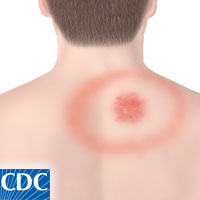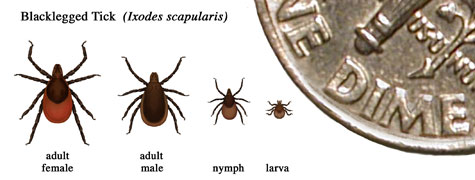It’s Spring – Time to Prevent Lyme Disease
When you are outside this spring and summer, prevent tick bites and reduce your risk of Lyme disease and other tick-borne diseases by following these tips.
As we start spending more time outdoors during spring and into summer, we have to be aware of the  risk of tick bites. Gardening, golfing, hiking, and just playing outdoors are all great spring and summertime activities, but make tick protection part of your outdoor plans as well.
risk of tick bites. Gardening, golfing, hiking, and just playing outdoors are all great spring and summertime activities, but make tick protection part of your outdoor plans as well.
Fortunately there are several tactics you and your family can use to prevent tick bites and reduce your risk of tick-borne disease.
· Know where to expect ticks. Blacklegged ticks live in moist and humid environments, particularly in or near wooded or grassy areas. You may come into contact with ticks during outdoor activities around your home or when walking through vegetation such as leaf litter or shrubs. To avoid ticks, walk in the center of trails.
· Use a repellent with DEET (on skin or clothing) or permethrin (on clothing and gear). Products containing permethrin can be used to treat boots, clothing and camping gear which can remain protective through several washings. Repellents containing 20% or more DEET (N, N-diethyl-m-toluamide) can be applied to the skin, and they can protect up to several hours. Always follow product instructions! Parents should apply repellents to their children, taking care to avoid application to hands, eyes, and mouth.
· Perform Daily Tick Checks. Check your body for ticks after being outdoors, even in your own yard. Conduct a body check upon return from potentially tick-infested areas by searching your entire body for ticks. Use a hand-held or full-length mirror to view all parts of your body and remove any tick you find.
· Check your clothing and pets for ticks. Ticks may be carried into the house on clothing and pets. Both should be examined carefully, and any ticks that are found should be removed. Placing clothes into a dryer on high heat effectively kills ticks.
· Modify your landscaping to create “Tick-Safe Zones.” Keep patios, play areas and playground equipment away from shrubs, bushes, and other vegetation. Regularly remove leaf litter and clear tall grasses and brush around your home, and place wood chips or gravel between lawns and wooded areas to keep ticks away from recreational areas (and away from you).
· Use a chemical control agent. Effective tick control chemicals are available for use by the homeowner, or they can be applied by a professional pest control expert. Even limited applications can greatly reduce the number of ticks–a single springtime application of acaricide can reduce the population of ticks that cause Lyme disease by 68–100%.
· Prevent Ticks on Animals. Prevent family pets from bringing ticks into the home. Maintain your family pet under a veterinarian’s care. Two of the ways to get rid of ticks on dogs and cats are putting on tick medicine or using a tick collar. Be sure to use these products according to the package instructions.
What to Do If You Are Bitten by a Tick
Remove an attached tick using fine-tipped tweezers as soon as you notice it. If a tick is attached to your skin for less than 24 hours, your chance of getting Lyme disease is extremely small. But to be safe, watch for signs or symptoms of Lyme disease such as rash or fever, and see a healthcare provider if these develop. Your risk of acquiring a tick-borne illness depends on many factors, including where you live, what type of tick bit you, and how long the tick was attached.

Relative sizes of several ticks at different life stages. In general, adult ticks are approximately the size of a sesame seed and nymphal ticks are approximately the size of a poppy seed.
Source: Center for Disease Control http://www.cdc.gov/lyme/



